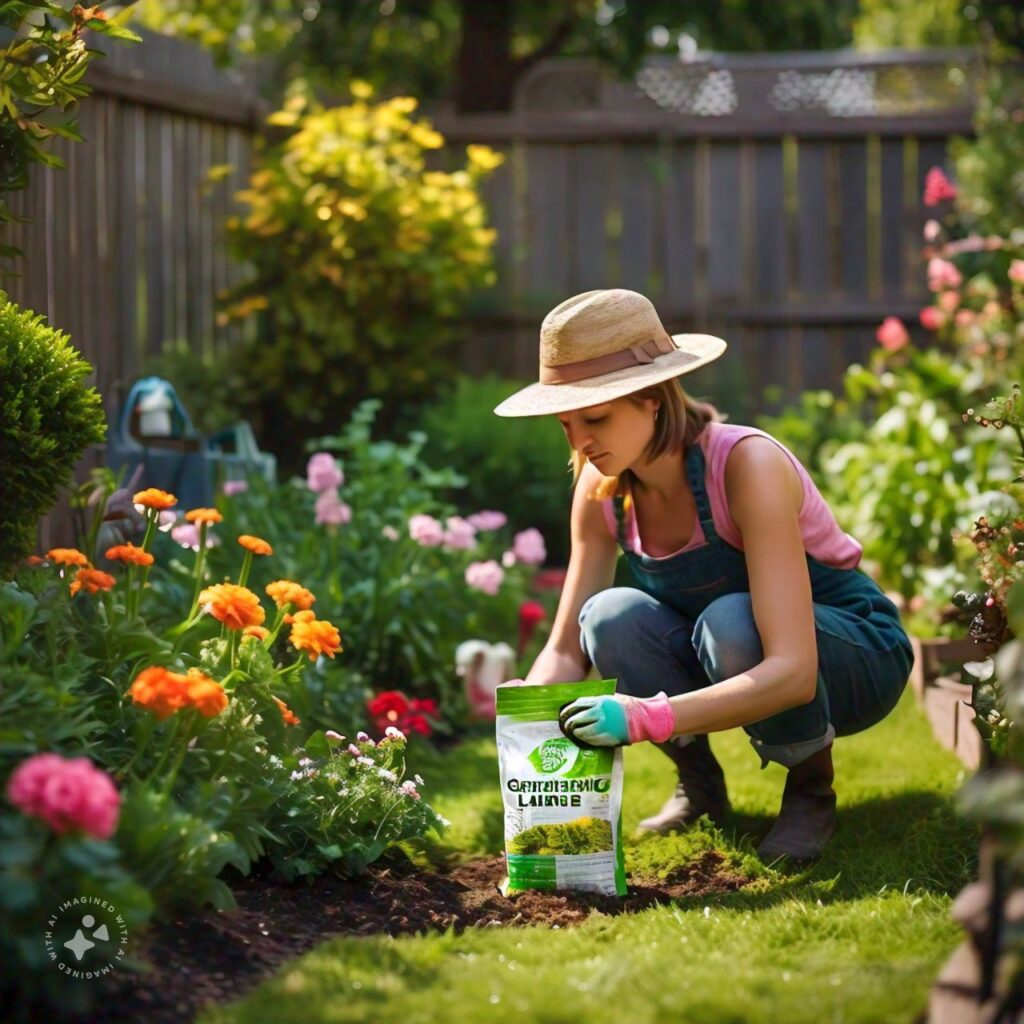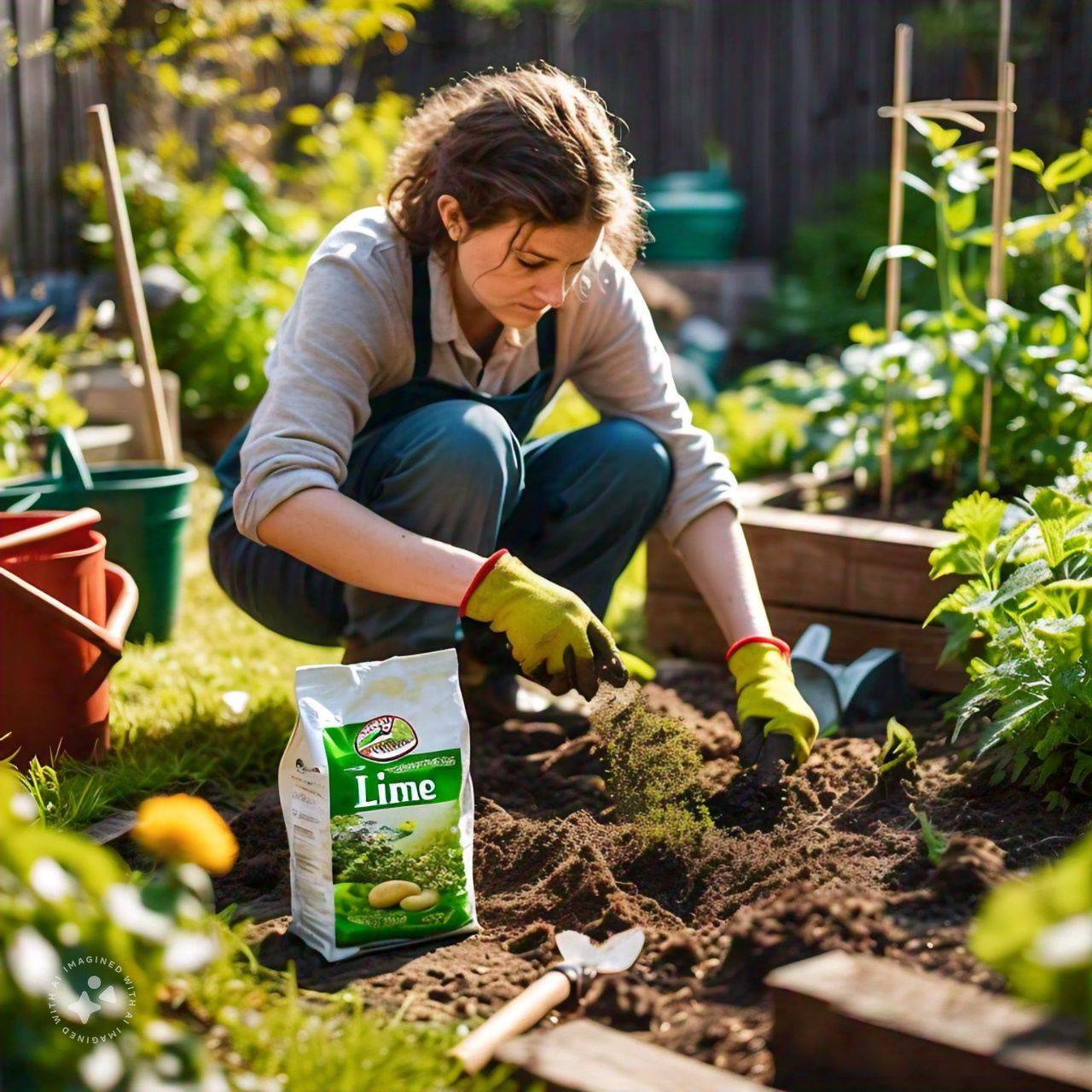Gardening lime, also known as agricultural lime, is a vital soil amendment that helps balance soil pH, improve nutrient availability, and boost plant growth. Whether you are a seasoned gardener or a beginner, understanding the importance of lime and how to use it effectively can make a significant difference in the productivity of your garden.
What is Gardening Lime?
Gardening lime is primarily composed of calcium carbonate (CaCO3), which is derived from crushed limestone. There are also variations such as dolomitic lime, which contains both calcium carbonate and magnesium carbonate. Lime is commonly used in gardens to neutralize acidic soils and restore the soil’s pH balance, creating an optimal environment for plants to absorb essential nutrients.
Why is Lime Important for Your Garden?
Soil pH plays a crucial role in plant health and nutrient uptake. Many plants thrive in slightly acidic to neutral soil (pH 6.0 to 7.0), but some soils can become too acidic due to factors such as over-fertilization, rain leaching, and organic matter breakdown. When soil is too acidic, nutrients like nitrogen, phosphorus, and potassium become less available to plants, leading to poor growth, yellowing leaves, and reduced yields.
By applying lime, we help raise the soil pH, making these vital nutrients more accessible to plants. In addition, lime adds essential calcium and magnesium to the soil, both of which are important for plant cell structure and enzyme activity.
Types of Gardening Lime
There are several types of gardening lime available, and choosing the right one depends on your soil’s specific needs. The most common types are:
- Calcitic Lime (Calcium Carbonate): This is the most widely used type of lime, providing a high level of calcium while raising soil pH effectively.
- Dolomitic Lime (Calcium Magnesium Carbonate): Ideal for soils that are deficient in both calcium and magnesium, dolomitic lime provides both nutrients and neutralizes soil acidity.
- Hydrated Lime (Calcium Hydroxide): A fast-acting but more caustic form of lime, hydrated lime is often used in small amounts for quick results.
- Pelletized Lime: This is calcitic or dolomitic lime in pellet form, which is easier to apply and less dusty than powdered lime. It breaks down slowly over time, making it ideal for long-term pH management.

When and How to Apply Gardening Lime
Timing is crucial when applying lime to your garden. Lime should be applied well in advance of planting, as it takes time to adjust the soil pH. For best results, apply lime in the fall, giving it several months to break down and affect the soil before the next growing season.
Before applying lime, it is essential to test your soil to determine its current pH. Over-liming can lead to alkaline soil, which can be just as problematic as acidic soil. Once you know your soil’s pH, follow these steps:
- Prepare the Soil: Clear the area of weeds, debris, and other plants. Work the soil to a depth of about 6 inches to ensure even lime distribution.
- Spread the Lime: Use a broadcast spreader for even application. If using powdered lime, wear a mask to avoid inhaling dust. If using pelletized lime, it can be applied directly to the soil.
- Incorporate the Lime: Rake or till the lime into the soil to help it mix thoroughly. This will ensure that the lime interacts with the soil and starts working on adjusting the pH.
- Water the Area: After applying lime, water the area well to help it penetrate the soil and begin neutralizing acidity.
Benefits of Using Gardening Lime
- Improves Soil Structure: Lime helps flocculate clay particles, improving soil structure and aeration. This leads to better root growth and water retention.
- Increases Nutrient Availability: By raising soil pH, lime improves the availability of essential nutrients such as nitrogen, phosphorus, and potassium, which are often locked up in acidic soils.
- Prevents Calcium Deficiency: Calcium is a crucial nutrient for plants, especially for fruiting plants like tomatoes, peppers, and squash. Applying lime ensures that your plants have access to enough calcium to prevent blossom end rot and other calcium-related disorders.
- Reduces Toxicity: Acidic soils can increase the solubility of toxic elements like aluminum and manganese, which can stunt plant growth. Lime helps neutralize these elements, creating a safer environment for plants.
Common Mistakes to Avoid When Using Gardening Lime
While lime is beneficial for soil health, there are some common mistakes gardeners should avoid:
- Over-Liming: Applying too much lime can make the soil too alkaline, which can reduce nutrient availability and harm plants. Always test your soil before applying lime and follow recommended application rates.
- Applying Lime to Alkaline Soil: Lime is only beneficial for acidic soils. If your soil is already alkaline, adding lime will only worsen the problem.
- Using the Wrong Type of Lime: Not all soils are the same, and neither is lime. Dolomitic lime is best for soils that are low in magnesium, while calcitic lime is ideal for soils that only need calcium. Choose the right type of lime based on your soil test results.

How to Test Your Soil’s pH
Testing your soil’s pH is a simple process that can be done with a pH testing kit or by sending a sample to a soil testing lab. Most pH testing kits are easy to use and provide immediate results. Here’s how to do it:
- Collect Soil Samples: Take small samples of soil from various spots in your garden to get an accurate reading of your soil’s overall pH. Mix them together in a clean container.
- Follow the Kit Instructions: Use the pH test kit according to the manufacturer’s directions. Typically, you’ll need to add a soil sample to a testing solution or use a digital pH meter.
- Interpret the Results: The test will give you a pH reading, which indicates whether your soil is acidic, neutral, or alkaline. Based on this result, you can determine how much lime (if any) is needed to adjust the pH.
How Long Does It Take for Lime to Work?
The effects of lime on soil pH are not immediate. Depending on the type of lime used and the soil conditions, it can take several months for lime to fully break down and alter the pH. Pelletized lime tends to work slower than powdered lime, but it provides a longer-lasting solution. Be patient, and remember to monitor your soil’s pH regularly to track the progress.
Conclusion
Gardening lime is an essential tool for maintaining healthy soil and promoting vigorous plant growth. By understanding your soil’s needs and applying lime correctly, you can ensure that your garden thrives season after season. Whether you are growing vegetables, flowers, or shrubs, balanced soil pH is the foundation of a productive garden.




2 Comments